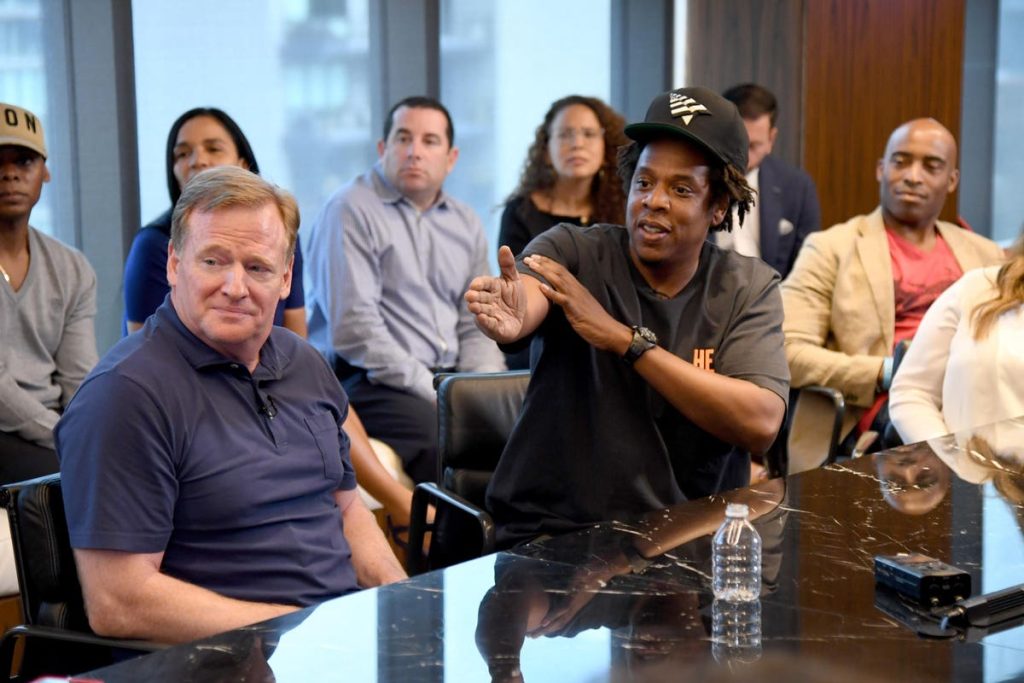The NFL recently announced that eight-time Grammy Award winning singer Usher will headline the 2024 Super Bowl Halftime Show. This show will mark the fifth year that Roc Nation has collaborated with the NFL as their Live Music Entertainment Strategists. The partnership was created to nurture and strengthen community through music, and is part of the NFL’s Inspire Change program.
Collaboration is a hallmark of inclusive marketing. And with the Roc Nation partnership, there have been some notable changes in how the NFL shows up that makes it more inclusive.
Improving The Experience Of The Selection Process
Relationships are a major currency of business. And prior to Roc Nation being involved in the selection process of the Super Bowl Halftime Show, it was problematic for the artists that were being considered to headline the show.
Dan Runcie is the founder of Trapital. His analysis showed that Roc Nation played a major role in transforming the process into one that delivered a better experience to artists and prevented the NFL from damaging relationships.
As you’re working to engage consumers from a community you aren’t a part of, be sure to collaborate with people who have the lived experience of people who are in the community.
Jay-Z is an artist. The NFL and Halftime Show sponsors are not. Jay-Z and his team were able to bring the perspective of the artist and an ideal way to manage the selection process from their perspective, that allowed the NFL to maintain their existing relationships.
Customer experience is a critical component of inclusive marketing. The two go hand and hand. But customer experience isn’t just about the end user. It also must consider the experience of everyone involved, including service providers — in this case, the artists.
Seizing Cultural Connections
Events like the Super Bowl Halftime show are often special all by themselves. But the experience can be elevated and have added meaning and a deeper emotional connection when it is connected to cultural relevance.
We’ve seen this during Beyoncé’s Renaissance World Tour. As Beyoncé goes to different cities that have meaning to her, she adds cultural elements to elevate the experience. At her recent tour stop in her home town of Houston, she invited Megan Thee Stallion to the stage to perform the “Savage” remix with her. It was the first time they’d ever performed the song together.
As Roc Nation has consulted with the NFL, Runcie’s analysis showcased that the Super Bowl Halftime show is leaning into cultural relevance as a way to select artists for the concert and give it deeper relevance and meaning. Usher’s Super Bowl performance follows other notable shows from Roc Nation’s pantheon like: Rihanna’s long-awaited return to the stage; featuring Detroit natives Dr. Dre, Snoop Dogg, Mary J Blige, Kendrick Lamar and Eminem; and Shakira and Jennifer Lopez sharing the stage.
Since 2020, the NFL has also started playing “Lift Every Voice and Sing,” also known as the Black national anthem, before each game including the Super Bowl. The inclusion of this song gives a nod to the Black community by acknowledging both their history and significance to both the league and the country.
Cultural intelligence is required for any brand that wants to engage, connect with, and build a more diverse customer base. And seizing opportunities to lean into the culture only happen when you have people on the team who understand the significance of various cultural events, and who can connect the dots for relevance to identify ways to elevate the experience.
Everyone on your team should have a degree of cultural intelligence. However, if your team doesn’t have cultural intelligence as a competency today, be sure to collaborate and bring on partners who can bridge the gap for you until you do.
The progress the NFL is making from an inclusion standpoint is noteworthy, especially given the backlash they received in response to how they handled Colin Kaepernick’s peaceful protests of police brutality against Black people by bending the knee during the national anthem during the 2016 season.
It goes to show that even though there may have been things you haven’t quite gotten right in the past with regards to inclusion, that doesn’t mean that you can’t make forward progress with it in the future.
Embrace partnering and collaborating with people who are a part of the communities you want to reach. It will equip you to better serve a bigger, more diverse audience, and enable you to produce a better product for them.
Read the full article here










